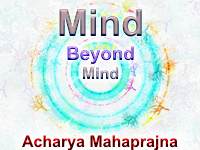
.
The Jain discipline has prescribed certain penances for the monks. One of them is called Atapana or absorbing the heat from the sun. Scores of monks used to perform this penance. They sat in the rays of the sun continuously and did not eat anything for two-three days. Whatever meagre meals they took were supplemented by the rays of the sun, which they absorbed. They knew the food value of the rays of the sun. There are three kinds of Atapana: Jaghanya (lower quality) Madhyama (medium quality) and Uttama (superior quality). The monks chose one of them according to their capacities. The rays of the sun can also serve as full diet. During the course of the heating of their bodies, the monks used to cover themselves with a small loins cloth and kept a major part of their bodies exposed to the sun. The rays of the sun penetrated into their bodies through the holes at the roots of their hair and activated a number of centres in their bodies. The clothes we put on deprive our bodies of the benefit received from the air and the rays of the sun.
The heat of the sun can serve as food only when the Taijasa body is active, not otherwise. The Taijasa body has two functions: 1. It drives the body and 2. It is benedictory and controls human beings. The benign looks of a great personality shed joy among the spectators. The poet Pujya Kusala observes in his epic, Bharata Bahubali Mahakavyam: It is not through speech, but through their looks that emperors express their pleasure. This grace does not emanate from the looks, but from the Taijasa body. The other function of the Taijasa body is the controlling power, which governs human beings. A single angry look sometimes unarms the opponents and terrifies them.
The Karmana body is the subtlest body. It is the base of all the other bodies, gross as well as subtle. The Taijasa. Vaikriya, Aharaka and Audarika (of flesh and blood) bodies cannot exist without the Karmana body. The soul is released from the gross body when the latter dies, but not from the Karmana body. It is only when the soul attains Moksha that it drops the Karmana body. It is separated from gross bodies several times, but it is released from the Karmana body only once for all.
Once there was an argument between a fly and an ant. The fly took pride in its capacity to reach any object or place it liked in no time, but the ant could not. It could even perch on the sacred food offered to the gods. The ant retorted, 'But you go uninvited are, therefore, driven away'. The human body is like the fly. Even when the soul leaves it, it comes up again before the soul. The Karmana body is not like this. It cannot be relinquished easily. This body is composed of dispositions, predilections and traces left by past desires and it is difficult to get rid of it.
The purpose of Sadhana is to activate the gross as well as the subtle bodies. It is an attempt to take advantage of all the bodies. Psychologists divide the mind into the conscious and the unconscious aspects. The latter is a thousand times more powerful than the former. It is the source of infinite energy. You can control and guide the conscious but not the unconscious mind. Once an idea takes root in the unconscious mind it will never be obliterated. We can differentiate between the gross and the subtle bodies in the same way. The latter are a hundred times more powerful than the former. To activate the subtle body is to activate a whole store of electrical energy. Anyhow, the gross body is the primary medium for the manifestation of our powers and strength. It is a very important instrument of Sadhana. We have tried to underestimate it because of its association with desires, predispositions, and predilections. Poets have decried it in several ways. Some blind enthusiasts have gone even to the extreme of suggesting that we should make our eyes blind before we enter into Sadhana because they defile us.
There are two parts of the gross body, which are useful in Sadhana, the brain and the Susumna channel. The brain guides and controls the entire body. It also accumulates knowledge and utilizes it. There are brain centres for all the sense organs. It is the storehouse for all the memories. It has millions of cells, which contain innumerable traces left behind by past experiences. The art of Avadhana works through these cells only.
The Nandi Sutra (a Jain scripture) gives an elaborate discussion on the kind of knowledge known as Mati Jnana, which is of twelve kinds. All these are the sparks of the brain. It is now admitted that we should have a comprehensive knowledge of the gross body. The brain, the spinal cord, the throat, the eyebrows, the roof of the mouth, the navel, the Mulabandha and the toes are very important organs. We can activate the gross body through them and produce various kinds of energy which are highly profitable to us. Of course, we are not able to take advantage of all these energies. Most of them lie hidden in the unconscious and are never aroused. Religion, spiritual discipline and Sadhana presuppose the existence of boundless energy in man. We have to understand and appreciate this fact in order that we may take advantage of it. But it is not possible to do so unless we have known the gross body sufficiently well. That is why I say that we should not be indifferent to the gross body, but understand and appreciate it.
 Acharya Mahaprajna
Acharya Mahaprajna

